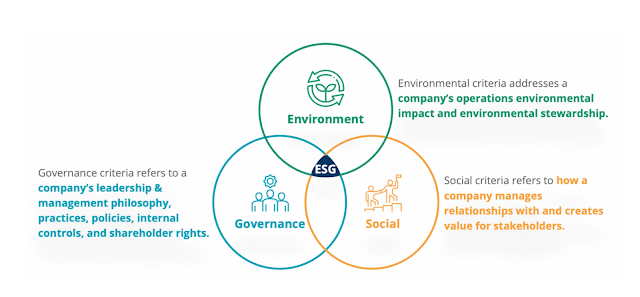What is Digital Transformation and Sustainable Development
.jpeg) Image source: https://www.sfmagazine.com/articles/2022/april/the-digital-transformation-of-sustainability-data/?psso=true
Image source: https://www.sfmagazine.com/articles/2022/april/the-digital-transformation-of-sustainability-data/?psso=trueBy: Harjinthar Singh, PhD | Bite-size Learning
What is Digital Transformation
Digital transformation involves the integration of digital technology into various aspects of an organisation’s operations, processes, and strategies. It goes beyond simply implement- ing new tools or technologies and encompasses a broader change in mindset and approach.
Because digital transformation will look different for every company, it can be hard to pinpoint a definition that applies to all. However, in general terms, we define digital transformation as the integration of digital technology into all areas of a business resulting in fundamental changes to how businesses operate and how they deliver value to customers. Beyond that, it’s a cultural change that requires organisations to continually challenge the status quo, experiment often, and get comfortable with failure. This sometimes means walking away from long-standing business processes that companies were built upon in favour of relatively new practices that are still being defined.1
Digital transformation involves leveraging digital technologies such as cloud comput- ing, big data analytics, artificial intelligence, machine learning, Internet of Things (IoT), and automation to improve business processes, enhance customer experiences, drive inno- vation, and gain a competitive edge.
It often requires rethinking existing business models and adapting them to the digital age. It is the process of using digital technologies to fundamentally change the way an organisation operates and delivers value to its customers.
As a broad concept that encompasses many different aspects of business, it includes:
-
Customer experience - Digital transformation can be used to improve the customer experience by making it easier for customers to interact with the organisation, pro- viding them with a more personalised service, and giving them access to information and services 24/7.
-
Business processes - It can be used to automate and streamline business processes, making them more efficient and effective.
-
Organisational structure - It can be used to change the way an organisation is structured, making it more agile and responsive to change.
-
Culture - It can be used to change the culture of an organisation, making it more innovative and customer-centric.
Digital transformation is not a one-time event. It is an ongoing process that requires organi- sations to continuously adapt to new technologies and changes in the market. Organisations that are able to successfully implement digital transformation will be better positioned to compete in the global economy.
In today’s rapidly evolving business landscape, organisations need to constantly adapt to new technologies and market changes to stay competitive. The digital world is constantly evolving, with new technologies emerging and customer expectations shifting. Therefore, organisations must embrace digital transformation as a continuous journey rather than a finite project.
Successful digital transformation requires a mindset of agility and adaptability. It in- volves fostering a culture of innovation and encouraging employees to embrace change and explore new opportunities. It also requires organisations to invest in the necessary infrastructure, systems, and talent to support ongoing digital initiatives.
What is Sustainability Development
As previously discussed in Chapter 1, sustainable development refers to a concept that aims to meet the needs of the present generation without compromising the ability of future generations to meet their own needs. It recognises the interdependence of economic growth, social progress, and environmental protection, and seeks to strike a balance between these three pillars of development.
The concept of sustainable development gained prominence with the publication of the Brundtland Report in 1987. The report outlined the following description of sustainable development:
1. Sustainable development is development that meets the needs of the present without compromising the ability of future generations to meet their own needs. It contains within it two key concepts:
a. the concept of “needs,” in particular, the essential needs of the world’s poor, to which overriding priority should be given; and
b. the idea of limitations imposed by the state of technology and social organiza- tion on the environment’s ability to meet present and future needs.
2. Thus the goals of economic and social development must be defined in terms of sustainability in all countries—developed or developing, market-oriented or centrally planned. Interpretations will vary, but they must share certain general features and must flow from a consensus on the basic concept of sustainable development and on a broad strategic framework for achieving it.
3. Development involves a progressive transformation of economy and society.2
In summary, the report defined it as "development that meets the needs of the present with- out compromising the ability of future generations to meet their own needs." It emphasises the integration of environmental, social, and economic considerations in decision-making processes to ensure long-term well-being.
In 1992, the UN Conference on Environment and Development published the Earth Charter, which outlines the building of a just, sustainable, and peaceful global society in the 21st century. The action plan Agenda 21 for sustainable development identified information, integration, and participation as key building blocks to help countries achieve development that recognises these interdependent pillars. Furthermore, Agenda 21 emphasises that broad public participation in decision-making is a fundamental prerequisite for achieving sustainable development 3.
SUMMARY
In summary, Digital transformation is an ongoing journey rather than a singular event, necessitating continual adaptation to technological advancements and market dynamics. Successful implementation positions organizations to flourish in a rapidly evolving global economy. In the ever-changing landscape of the digital world, embracing digital transformation is not just a choice but a necessity for maintaining competitiveness and relevance. Sustainable development strives for equilibrium between immediate needs and future generations' well-being, blending environmental, social, and economic considerations into decision-making processes. It is a holistic approach that addresses the interconnectedness of global challenges, fostering a legacy of prosperity for generations to come.
1 https://enterprisersproject.com/what-is-digital-transformation
2Our Common Future, Report of the World Commission on Environment and Development (Brundtland Report), United Nations, 20.03.1987
3Will Allen. 2007."Learning for Sustainability: Sustainable Development." Archived 14 January 2016 at the Wayback Machine
